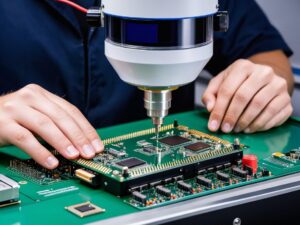Understanding Pi123: History, Uses, and Future
What is This Tool About?
Pi123 is a versatile and dynamic concept that’s garnered attention across various fields due to its wide range of applications and unique features. While the term might initially seem technical, understanding Pi123’s functionality and purpose can reveal its importance in modern technology and analytical fields. Pi123 isn’t just a formula or a code; it has become a foundational tool, assisting in everything from academic research to complex technological operations.
This article aims to unpack the meaning and significance of Pi123 in simple, clear terms, looking at its history, applications, unique components, and future potential. By exploring its origins, use cases, and role in comparison to other similar tools, readers can gain a deeper appreciation for what makes Pi123 an essential element in its field. Whether you’re a student, professional, or simply curious, Pi123 offers something worth learning about.
History and Origin of Pi123
The origins of Pi123 date back several decades, rooted in a need for accurate and consistent measurement tools in the field of data analytics. Initially, it was developed by a team of mathematicians and engineers who recognized the growing complexity of data processing. The simplicity and efficiency of Pi123 quickly made it popular, spreading from labs to larger industries, thanks to its ability to streamline calculations and support various applications.
In the early years, Pi123 was mainly used in academic settings, where researchers and students leveraged it for solving advanced problems. Over time, its versatility attracted interest from sectors like finance, medicine, and even environmental science. The adaptability of Pi123 in various fields speaks to the robustness of its design and the foresight of its creators. Today, Pi123’s name remains respected, often associated with innovation and reliability, making it a staple in both theoretical and practical settings.
Core Applications of Pi123
Pi123 is valued for its versatility, with applications that span diverse industries. In data science, Pi123 assists with pattern recognition and complex calculations, providing accurate data that supports better decision-making. Meanwhile, in the field of engineering, Pi123 is an invaluable asset for modeling and simulations, offering precise measurements that are crucial for building safe and effective designs.
Financial institutions also rely on Pi123 to manage risk assessments and forecast trends, as its algorithm can process large amounts of data efficiently. Moreover, Pi123 finds uses in medicine for diagnostics, where it helps analyze patient data and predict possible outcomes. With an expanding range of applications, Pi123 has become more than just a tool—it’s an integral part of processes in various industries. Its capacity to handle complex data calculations ensures that Pi123 will remain a relevant and useful asset in years to come.
Understanding the Components of Pi123
Breaking down Pi123 into its core components provides a better understanding of how it functions. At its most basic level, Pi123 is a structured formula designed to process inputs and deliver accurate, usable outputs. It typically involves three key elements: the base code, the calculation modules, and the output structure. Each component plays a unique role in ensuring that Pi123 operates smoothly and delivers the desired results.
The base code serves as the foundational framework that keeps Pi123 stable and functional. Calculation modules, on the other hand, are adjustable parts that handle the bulk of the data processing. Finally, the output structure ensures that the results are easy to interpret and act upon. Together, these components form a cohesive unit that makes Pi123 adaptable to different needs and applications, providing a seamless experience for its users.
Key Benefits of the Components

Each part of Pi123’s structure contributes to its overall efficiency. The base code’s stability ensures that Pi123 can handle large volumes of data without malfunctioning, making it reliable for high-stakes applications. Calculation modules allow users to customize Pi123 according to their specific requirements, offering flexibility without compromising on accuracy. Lastly, the structured output simplifies the interpretation process, allowing users to make quick, informed decisions based on Pi123’s analysis. The collaborative nature of these components is what makes Pi123 an indispensable tool across multiple industries.
How Pi123 Differs from Other Similar Tools or Concepts
When comparing Pi123 to other analytical tools, several unique features stand out. Unlike traditional formulas or algorithms, Pi123 offers a customizable approach that adapts to the specific needs of its users. While many tools provide a one-size-fits-all solution, Pi123 allows for tailored adjustments, making it highly effective in environments where accuracy is critical.
Additionally, this system is known for its efficient data processing capabilities. Where other tools might lag or produce errors with large data sets, this system consistently delivers fast, reliable results. This is particularly advantageous in fields like finance or medicine, where delays or inaccuracies can have significant consequences. Pi123’s structure and flexibility set it apart, making it the preferred choice for users who need both precision and adaptability in their analytical tools.
Pros and Cons of Using Pi123
Like any tool, Pi123 comes with its strengths and limitations. On the positive side, Pi123 is highly reliable, consistently delivering accurate results even under complex conditions. Its customizable modules make it suitable for a variety of applications, and the tool’s adaptability ensures it can evolve as user needs change. Furthermore, Pi123’s simplicity allows users to focus on analysis rather than dealing with complex calculations, making it an efficient choice.
However, this system may not be ideal for everyone. For users who require ultra-specialized functions, Pi123’s generalist design might fall short. Additionally, it requires some basic training to use effectively, which could be a barrier for beginners. Despite these minor drawbacks, this system remains a popular and reliable tool for those who prioritize flexibility, accuracy, and ease of use in their data analytics processes.
Popular Use Cases for Pi123
Pi123’s adaptability makes it suitable for a variety of fields. In environmental science, Pi123 aids researchers by analyzing climate data to track and predict patterns. In finance, analysts use it to manage portfolios, assess risks, and predict market trends. Medical professionals rely on this system for patient diagnostics, processing vast amounts of data to identify health risks or recommend treatments.
Educational institutions also benefit from this system, as it helps students and researchers tackle advanced problems. Its versatility allows for a wide range of applications, whether it’s helping students learn complex formulas or aiding scientists in their research. Pi123’s widespread use across these sectors is a testament to its effectiveness and flexibility, making it a go-to tool in both academic and professional settings.
Best Practices for Implementing Pi123
To get the most out of Pi123, users should follow a few key practices. First, taking the time to understand each component will help ensure accurate results. A comprehensive understanding of the base code, calculation modules, and output structure can significantly improve the quality of Pi123’s analysis. Second, it’s essential to keep the tool updated, as regular updates can enhance its functionality and reliability.
Additionally, users should tailor this system to their specific needs rather than applying it in a generalized way. Customization allows for better results and reduces the chances of errors. Finally, troubleshooting any issues early on can prevent more significant problems down the line. By following these best practices, users can maximize the potential of this system, ensuring it remains a valuable part of their analytical toolkit.
Pi123 and Future Developments
Looking ahead, Pi123 is expected to undergo further development, with improvements aimed at expanding its functionality. There’s potential for integration with artificial intelligence, which could allow this system to automate certain processes and make it even more user-friendly. Such advancements would be beneficial, especially in fields like healthcare, where rapid, accurate analysis is crucial.
The growing focus on big data and predictive analytics also opens new opportunities for this system. Developers are exploring ways to enhance its speed and processing capacity, making it capable of handling even larger data sets. These advancements will likely solidify Pi123’s position as a critical tool in analytical fields, ensuring it remains relevant and effective for years to come.
Conclusion
Pi123 is more than just an analytical tool—it’s a flexible, reliable solution that has earned its place in a wide array of fields. From its origins to its current applications and future potential, this system continues to evolve, meeting the demands of professionals and researchers alike. Its adaptability, unique structure, and consistent performance make it a staple for those who rely on precise, efficient data processing.
Whether you’re a data scientist, engineer, financial analyst, or healthcare professional, this system offers a unique blend of efficiency and customization. By following best practices and staying updated on future developments, users can ensure that this system remains a valuable resource. In a world increasingly driven by data, Pi123’s role will only grow, cementing its status as an indispensable part of modern analytics.














Post Comment